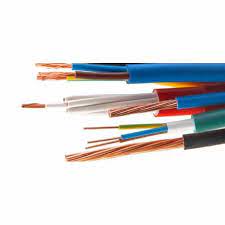Handling and installing electric cables is a crucial task that demands concentration on detail and strict adherence to safety protocols. Electrical installations, if not done correctly, could result in dangerous situations, such as sparks and fires. Here are some important precautions to take when dealing when working with electric cables.
Shut off Power: Prior to starting any work, ensure that the power supply has been shut off. Make use of an electronic voltage tester to verify that the circuit is de-energized. This step is fundamental in preventing electric shocks.
Use Appropriate Tools: Utilize insulated tools designed for electrical work. Insulated screwdrivers, pliers and wire strippers help protect against accidental electrical contact. Beware of using tools made of metal or tools that are not designed for electrical use.
Wear Safety Gear: Equip yourself with personal protective equipment (PPE) including rubber gloves, safety glasses and insulated mats. This equipment adds an extra layer of protection from electrical hazards.
Inspect Cables: Before installation examine cables for damage including frayed insulation or exposed wires. Damaged cables need to be repaired or replaced by a professional to avoid short circuits or electrical fires.
Conform to Code Regulations: adhere to local electrical codes and standards. These regulations are designed to ensure safety and reliability for electrical installations. Consulting your copy of the National Electrical Code (NEC) or local guidelines will ensure that you are in compliance.
Avoid overloading circuits: Be mindful of the electrical load on each circuit. Overloading can cause an overheated circuit and fire hazards. Ensure that the cables that you purchase are rated to handle the load you expect.
Proper routing: route cables away from heat sources, sharp edges, and other potential hazards. Use cable conduits or trays to safeguard cables cables from physical damage and to keep them organized.
By following these tips for safety by following these safety tips, you can lower the chance of injuries and ensure a secure and efficient electrical installation. Prioritizing safety not only protects your family but also improves the overall security of the electrical system.

